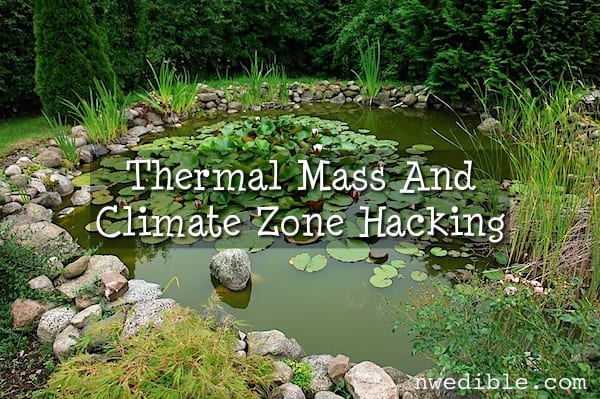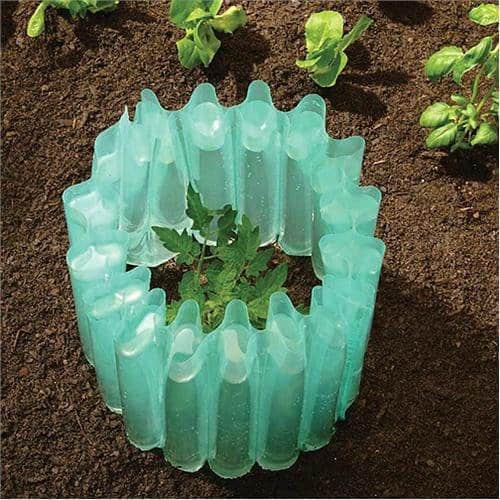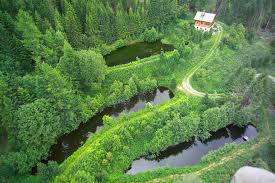Picture yourself on a beach. It’s late August and you’re sinking your bare feet into the sand. You can feel the warmth of the sand on your toes. It’s not just warm, it’s downright hot. It’s starting to be uncomfortable, so you wiggle your feet a few inches down into the sand where it is damp and cool. Much cooler.
You’re still hot, so you reach your hand over to a large granite bolder that’s placed behind you, part of a large breakwater. It’s warm – cooler than the hot, dry sand but warmer than the damp sand working it’s way under your toenails. You lever yourself up and walk down to the ocean, which seems completely unmoved by the full power of the sun above. The water is cold and you splash around just enough to cool down before finding your way back to the hot, sandy spot you’d staked out.
Why is the damp sand cooler than the dry sand? Why is the large boulder a temperature somewhere between the two? Why is the ocean water the coldest of all? The sun is beating down equally on all these things – why do some respond by warming up and absorbing that heat more than others? Most importantly, what does any of this mean to gardeners, and how can we use it to hack and manipulate our microclimates?

It all comes down to thermal mass, the shorthand term for the ability of an object to hold heat and even out temperature fluctuations, and specific heat capacity, the related measure of how much energy is required to change the temperature of a given weight of a substance by one degree.
Dry sand heats up quickly when the rays of the sun beat down upon it because it has relatively low specific heat capacity. It just doesn’t take a lot of energy to warm that sand up. Water, however, has the highest specific heat capacity of anything we are likely to deal with in a garden. So damp sand – a mixture of sand and water – takes far longer to heat up than dry sand. Granite boulders…well they have a little bit higher specific heat capacity than sand but not quite as much as water.
Specific heat capacity measures how much energy is required to change the temperature of a substance, and that shows up both on the warming side and the cooling side. A pound of sand, warmed up quickly to the ambient temperature of the day will, with its fairly low specific heat capacity, cool off quickly come the evening. You can think of this as the “Easy Come, Easy Go” principle of heat storage, and it explains why hot, hot daytime deserts become cold, cold nighttime deserts nearly as soon as the sun sets.
On the other hand, a pound of water is quite slow to warm up, but will hold heat longer into the evening, releasing it to the environment and warming anything planted nearby, perhaps by a crucial degree or two. This is why the ocean is basically the same temperature day and night, summer and winter, and why seaside towns tend to be more moderate in temperature than inland ones. A large mass of water finds the temperature average and just holds it.
In this capacity, water is amazing stuff – it has a specific heat capacity several times that of its nearest realistic competitor (liquid ammonia and liquid lithium not being particularly useful in our backyards).
So what does this mean to us, as gardeners? Can this help us understand our soil and ripen peppers or stave of frost-kill of tomatoes? Resoundingly, the answer is yes!
First, let’s look at soil.
If you want your soil to warm up in the spring faster, dry it out. Cover it, keep the rains off, increase drainage. Obviously you need enough moisture to get your seeds up and growing and to keep your plants happy, but if you’ve got heavy clay, moisture-retentive soil that gets rained on every day in spring, you’ve got soil that may not really warm up until August. Pacific Northwest people, this is probably the path you should follow.
If you want your soil itself to be a better heat sink – to hold a more even temperature throughout the day because you live in a place with big day-to-night temperature swings, keep it moist. The added water in the soil will mitigate radical soil temperature swings. Add moisture-retaining compost, mulch the heck out of your beds and water as necessary. If you live someplace like Texas, where you can easily see a 50-degree temperature swing from day to night, this is probably the path you should follow.
Second, let’s look at season extension opportunities.
I imagine most of my Pacific Northwest readers are familiar with the season extension product, the “Wall-o-Water.” Local folks swear by these products to get heat-lovers going earlier and protect against temperature dips.
Specific heat capacity is why products like the Wall-o-Water work – surround a tender plant with water and you’ve just created a top-notch heat-sink. The solar radiation absorbed by the water during the day is slowly radiated out at night, creating a pleasantly warm microclimate for plants that would otherwise be hurt by overnight lows.
The more high heat capacity stuff you can put around your tender plants, the more microclimate hacking you can do. That’s where thermal mass comes in. If a pound of water buffering overnight lows, five pounds is even better, and fifty pounds is great! Thermal mass is a fancy way of saying “More is Better.”
Let’s say you set up a black 50-gallon rain barrel on the south side of your house. It absorbs heat all day. 50 gallons is 400 pounds of water. That’s a lot of thermal mass! In fact, it’s enough water to warm an adjacent 10-foot cube of air by 21.5 freaking degrees for every degree the barrel cools off overnight.
Of course in a real garden we don’t confine our air to ten-foot cubes, so what you’ll actually find is a gentler but broader warming effect! But if you could increase overnight lows in one piece of your garden by 10-degrees, what would that mean for the plants you could successfully grow? That’s huge!
Getting that rain barrel to absorb some extra heat directly from the sun – by painting it black and putting it in a sunny spot – will increase not only the amount it has available to radiate out at night but also raise its temperature up above the daytime ambient temperature and contribute a bit to warming the air in its vicinity when the sun is out.
Added mass will always help to even out temperature fluctuations. Putting heavy things like water (think ponds, rain barrels, wall-o-water, etc.) or dense rocks (think rockeries, “bench rocks” and rock borders) near your plants will level out the difference between daytime highs and nighttime lows and help tender plants survive chilly nights. And if you can put them in the sun – then so much the better!
If you look at the greatest climate hackers out there – people like Sepp Holzer, who grows citrus in the Alps, and Ben Falk, who’s growing rice in the hills of Vermont, they do a ton of work with ponds. They place masses of water into their landscape strategically, to capture and hold solar energy and mitigate low temperatures. These ponds also reflect light to the surrounding edibles, like a giant mirror placed to boost the sunlight in a garden.
Sepp Holzer’s Farm:
Ben Falk’s Farm:
Those guys and others like them are doing crazy interesting stuff, but all gardeners, at any scale, can benefit from understanding specific heat capacity and thermal mass. Backyard growers can:
- Use Wall-o-Water type products for season extension
- Place rain barrels where they will do double duty as heat sinks and water catchment.
- Use rocks in your garden – from big boulders near a garden border to a pea-gravel mulch in a pot, use rocks to help heat-lovers in cool climates
- Pay attention to soil moisture as it relates to soil temperature
- Install small water features, ponds or swimming pools in places where they will create a desirable microclimate.
How do you hack your climatic limitations?
Related Stuff and Resources…
(These are affiliate links. Purchases made through these links cost you nothing extra but help me buy Advil after a long day spent digging a pond and moving rocks. Full financial disclosure here. Thank you for your support, guys!)
Wall-o-Water type things. I don’t use these but it’s not because I don’t think they are great, I do! It’s just that I am way too clumsy to fill them without crushing my tomato plants. More nimble-fingered gardeners swear by them.
The Resilient Farm and Homestead – The very detailed and beautiful handbook Ben Falk (the Vermont rice guy) wrote about how to assess sites, create earthworks, work with water, etc. It’s a bit of a textbook in terms of information density, but it’s wonderful. This one’s more applicable to folks with acreage.
Sepp Holzer’s Permaculture: A Practical Guide to Small-Scale, Integrative Farming and Gardening – Sepp Holzer’s book on the techniques he used to build his farm in the Austrian Alp’s, the Krameterhof. I haven’t personally read it, but I hear good things. If you are interested in this kind of stuff, you might watch this documentary on the Krameterhof (YouTube link).
13


Funny you should bring this subject up now. Just last week I was looking up something in my decade-old Master Gardener binder and noticed a section for the first time about using a heat-absorbing and releasing tub of water. I had just planted a tray of veggie seeds and I had just emptied a small pail of fertilizer that happened to be black, so I filled it with water and put the seedling tray on top, inside the greenhouse, to give them a little boost in the night without the need for an electric heating mat. So far so good! That’s pretty small scale, but I don’t foresee a pond in our future. Even the kiddie wading pool for the dogs has been filled early with mosquito larvae this year…
Try putting something in it that feeds on mosquito larva (small fish like koi or gold fish are awesome for this).
Are you sure you’re not just justifying your desire for a duck pond? 😉 Your articles always get the gears in my head churning. Maybe I should set my pots on the stone patio until the weather warms up. Thanks for being such an inspiration!
Awesome post. Please tell me you did not just create that pond in the top photo? I will seriously have to start hating you.
Uh, no. 😉 I bought a stock photo. But I can aspire to that! 🙂
This is a great article! I’m going to print it out for future reference. While I’m east of the cascades in the Columbia Gorge, it got me thinking about my micro climate and how I can warm it up earlier. Thanks for the post.
I’m passing this post on to my garden group, Erica. Good stuff! I always say “Micro-climate is everything!” so why not create your own?
Ben Falk has some really interesting presentations on YouTube, too.. though they do start to get a bit repetitive (not a fault, just different occasions to different groups).
I admit I was a little concerned when he mentioned his property absorbed 4 inches of a 6 inch rain event. The numbers aren’t really relevant, but coming from a place where runoff is critical to salmon habitat, I wonder if such a system would violate the ‘earth care’ and ‘fair share’ principles of permaculture around here.
Speaking of Ben Falk.. is anyone reading this in the Puget Sound area growing sea berries?
The water doesn’t disappear on absorption. I think it is mostly just slowed down and release is spread over a longer time. Surface run-off usually means erosion, which is not a good thing for salmon either.
I have planted a number of sea berries (AKA Sea Buckthorn) here in Seattle. They do fine but are slow-growing in the clay soil.
Great explanation of how this works! Thanks, Erica! I live outside Sequim on the Olympic Peninsula. Being in the “Rainshadow,” we get an average of 17″ rain and the temps stay relatively cool. I need to do more to create microclimates that help heat-loving plants through the season! I am also trying to figure out how to capture more of our currently plentiful rainwater to store for later in the summer when it can be rather scarce. Rainbarrels aren’t nearly enough. Seems like most of the engineered ideas I read about (Holzer, Falk, and others) use slopes & swales. Our land is very flat. Depending on the plant, I sometimes plant in raised beds; others in the “pits,” but I am still trying to figure out how to construct things, because there is not much of a contour to work with. I am also growing a few Sea Buckthorn plants. Harvested our first berries last year! V-C jolt!
I’m also on a flat site, so I have the same question. But I wonder about lining things up with my house: my roof is not flat and is obviously a pretty big watershed. And sites tend to be at least slightly graded away from the house (often towards a drain, if you have a porch or patio) so we don’t end up with water in the basement/foundation. Swales or rain gardens or ponds parallel to the house might help store/distribute the water off the roof, right?
Interesting reading…A couple of years ago, I redesigned my 12’x 8′ hot house. The south facing wall is the largest and two 55 gal. drums, painted black, full of water, sit half in and half out of the wall…the part that is on the outside is semi-enclosed and holds hot compost (mostly horse manure and shavings)….on the inside, the growing bench sits on top the two water drums giving the warmth needed on the cold nights…Last year outside temp. one morning was low 20’s, inside was low to mid 40’s…The hot compost keeps it warm even when its overcast and cold.
Its all very interesting when you start getting into this microclimate stuff: I grew water melon for the first time this year and all 4 melons grew up against or on dark rocks and one against some black corflut. Guess they were after the heat. Love your work Erica, as always..
Thanks to Marion, I now have a source for information specific to my locality.
Thank you
Thanks, Erica…. excellent presentation, as usual 🙂 But something has always confused me. It seems that if the heat absorbed in the day is released in the cool night, doesn’t the thermal mass become cooler and offset the heating that happens from the sun in the morning and thru the early day? In other words, the thermal mass heats inhibits cooling at night, but wouldn’t it be cold in the morning and inhibit the warming during the day?
That’s basically true but not exactly. The heat absorbed by the mass isn’t the same heat being absorbed by the air and plant.
Also the thermal mass is never going to be as cold in the early morning as the early morning air, because that’s the coldest point and the mass evens out the temperature swings.
I question the potency of thermal mass in our PNW cloudy Springs, but Erica seems to be having good results with it.